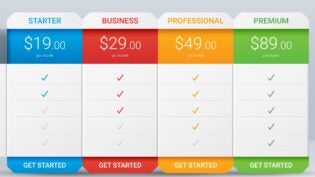
So you have decided you want to “get a piece” of the $6 trillion U.S. government agencies are spending each year. Now the more challenging question is: Where should you focus your sales / business-development activities to win some of this business?
The most recent U.S. Census reports that there are over 89,000 official government agencies in the country. Government agencies include the following federal, state, county, city, town, school district and special-purpose districts:
- Special districts: 37,203
- Municipalities: 19,522
- Townships: 16,364
- Independent school districts: 12,884
- Counties: 3,031
- Federal: 1,300
The reality is that with so many agencies, it is hard to know where to start. Most small to mid-sized companies typically start by trying to contact the purchasing personnel at governmental agencies that are closest to their office. This usually leads to fairly unproductive introductory meetings at city or county office buildings with government purchasing representatives who are generally over-worked, pre-occupied, and not all that interested in meeting with new prospective vendors they have no pending procurements for.
Once most companies participate in 20–30 of these “unproductive” meetings, they either give up on the entire government sales process or they decide to merely respond to any bids or RFPs (request for proposals) they happen to learn about. They stop being “proactive” in trying to grow their business, and go into a “reactive” mode of merely responding to bids and RFPs.
Responding to bids and RFPs is the “traditional” government procurement process. On a regular basis, government agencies release bids/RFPs for goods or services they need to purchase. From a company perspective, the challenges with the bid/RFP process are:
- Highly competitive: bids and RFPs are “announced” to the entire world for any company to respond; hence, they are typically very competitive with a significant number of companies submitting proposals.
- Lower margins: the highly competitive nature of the bid/RFP process typically reduces the margins/profitability of any deals won through this process.
- Limited success: companies will (obviously) only win a percentage of the proposals they submit (which take a significant time to prepare), and even for the efforts they win, they are only “happy” if the amount proposed to win the bid/RFP is not significantly lower than the other proposals. If you win a deal but leave too much money on-the-table (by under-bidding the competition by too much), you aren’t even happy when you win the deal.
- Reactive: the bid/RFP process causes companies to be reactive and “wait” for agencies to release their requirements. This naturally creates limitations in growing your government business.
Even if your company has “success” in the bid/RFP process, less than 20% of all government spending is completed through bids and RFPs. A majority of government spending is processed through the other purchasing processes available to government agencies, including: discretionary spending, state & federal purchasing schedules, and sole-source justifications.
So how do you know where to focus your sales resources if meeting with the local purchasing representatives is inefficient and the bid/RFP process only accounts for a small percentage of the total spending?
The key is that you need to focus on the agencies that are purchasing the products and/or services your company sells. It takes much longer and is much more difficult to convince an agency to “start” purchasing your product/service than it is to sell into agencies that are already purchasing the products and services you sell.
So how do you identify those agencies? Find tools and services that aggregate purchase orders by local agencies to know which governmental agencies are purchasing the products or services your company offers. These databases will also let you know which agencies your competitors are working with, and even what they are charging those agencies.
The bottom-line is that government agencies are spending a lot of money, and you need to determine an efficient, effective way to get your share of the business.
Published: September 18, 2013
3130 Views
3130 Views












